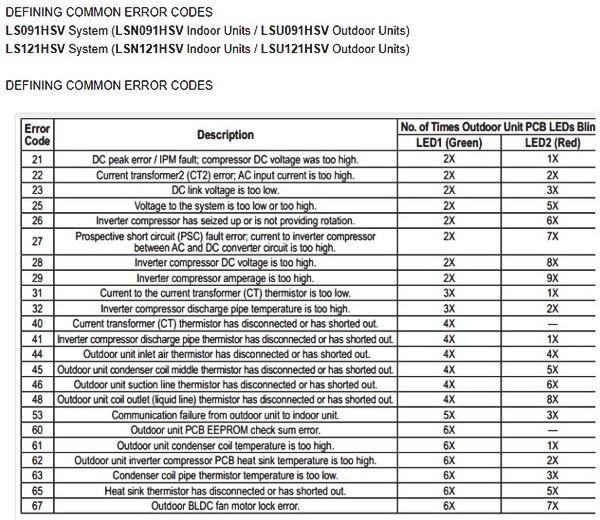
Imagine driving your car, and suddenly, a mysterious light appears on the dashboard. It’s alarming, isn’t it? Similarly, when your air conditioner displays an error code, it’s like your unit’s way of waving a flag and saying, “Hey, I need some attention!” The OE error often points to a drain problem, which might sound technical, but let’s break it down into simpler terms.
Understanding the OE Error Code
The OE error code is typically related to drainage issues within your LG air conditioner. Think of it like this: imagine you’re trying to pour water out of a bottle, but the opening is clogged. The water can’t escape, right? Similarly, if the drain of your air conditioner is blocked or malfunctioning, it can lead to the OE error code.
When this error appears, it often means that your unit isn’t able to properly remove the condensate — that’s the water vapor that your air conditioner collects from the air as it cools your home. Normally, this water is drained outside or into a designated container. But if something interrupts this process, the unit alerts you with an OE error. This isn’t just a minor inconvenience; it’s a heads-up to prevent potential water damage or inefficiency.
So, what could be causing this blockage or malfunction? There are several possibilities. It could be as simple as a kinked drain hose, just like how a garden hose can get tangled. Or maybe the hose is blocked by debris, dirt, or even insects. Another possibility is a faulty pump, which might be struggling to push the water where it needs to go.
Is It Safe to Continue Using the Air Conditioner?
You might be wondering, “Can I still use my air conditioner with this error code flashing?” In most cases, it’s best to proceed with caution. Using an air conditioner with an active OE error code can lead to a couple of issues.
Firstly, there’s the risk of water overflow. If your unit can’t drain water efficiently, it might start to accumulate inside. This can not only lead to water damage around the unit but might also damage internal components. Imagine leaving a leaky faucet running over time; eventually, it’s going to cause a mess.
Secondly, there’s the efficiency aspect. An air conditioner that’s struggling with drainage isn’t operating at its best. It might work harder, consume more energy, and that could reflect in your energy bills. Plus, an overworked unit might have a shorter lifespan, needing repairs or replacements sooner than expected.
The safest approach is to address this error promptly. While you might not need to panic, it’s wise to take action rather than ignore the problem. In the meantime, limit the use of the air conditioner if the OE error is active, especially if you notice any water leakage.
Steps to Take When You Encounter the OE Error
So, what should you do when you spot the OE error code? Think of it as a call to action. Here’s the deal: addressing it sooner rather than later can save you hassle down the road.
Start by checking the drain hose. Is it kinked or blocked? Straighten it out if necessary, and inspect for any visible obstructions. It’s a bit like untangling a stubborn set of earphones. If the hose is clear but the error persists, you might need to clean it more thoroughly. Running a gentle stream of water through the hose can sometimes flush out any hidden blockages.
Next, consider the drainage pump. If you’re comfortable, you can inspect it yourself for any signs of wear or damage. However, if this feels like uncharted territory, it might be best to call in a professional. A qualified technician can assess the pump and overall drainage system to ensure everything’s functioning correctly.
To prevent future issues, regular maintenance can be your best friend. Consider scheduling periodic check-ups for your air conditioner, much like you would for a car. This can catch potential problems before they become significant issues, ensuring your unit runs smoothly for years.
In summary, while the OE error can be a bit of a nuisance, understanding its implications and acting promptly can keep your air conditioner in good health. Treat it as an opportunity to give your unit some well-deserved attention, and rest assured you’re taking the right steps to maintain a comfortable, worry-free home environment.